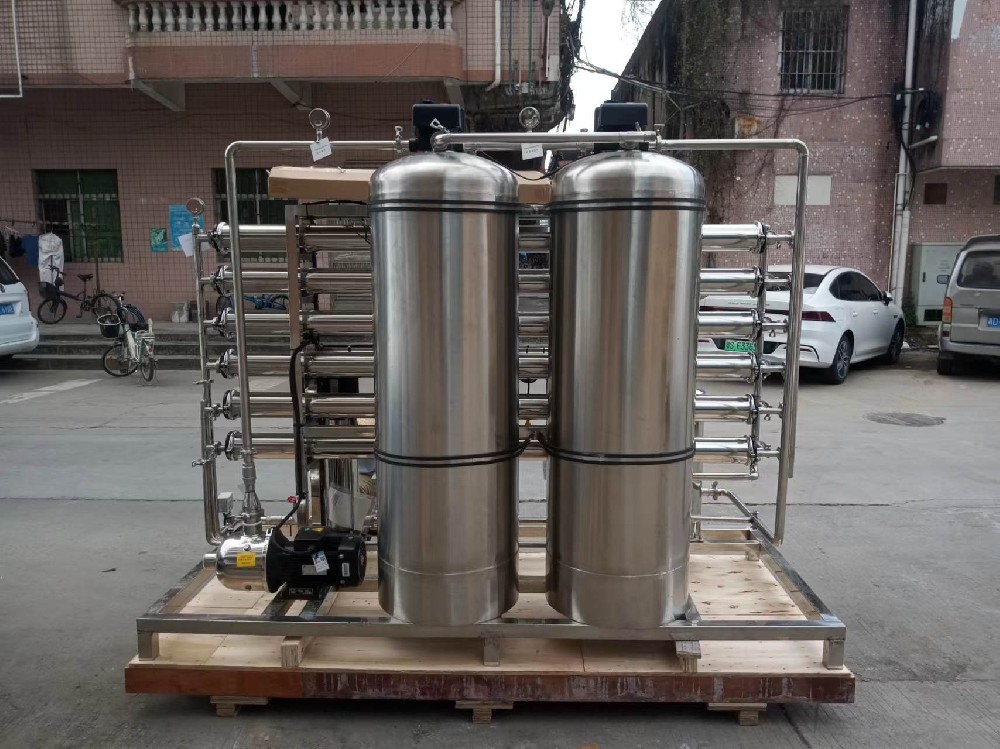
Wechat/Whatsapp:
+8613798883773

Wechat/Whatsapp:
+8613798883773
HYWATER Reverse Osmosis plant/system


Reverse osmosis system membrane Regular cleaning In the long-term membrane separation process, the product water capacity of the reverse osmosis membrane will decrease with the increase of the operation time, and the phenomenon occurs because of the membrane fouling problem. It can be seen that the membrane element system must be cleaned regularly, so as to remove the pollution on the reverse osmosis membrane surface or in the membrane pores, and achieve the purpose of restoring the water production and prolonging the life of the membrane. The reverse osmosis membrane cleaning scheme is divided into physical method and chemical method, both of which can effectively clean the membrane. Physical method: This method uses mechanical force to remove contaminants from the membrane surface. No chemical reaction occurs during the entire cleaning process. Chemical method: The purpose of cleaning the membrane is achieved by chemical reaction between a certain chemical and the filter cake on the membrane surface. Reverse osmosis membrane physical cleaning method 1. Manual scrubbing method This method is a relatively primitive but effective method. The parent method is to gently wipe the disassembled flat film with a soft substance (such as a sponge) on the surface of the film, and rinse it off with water while wiping. This method can effectively remove a large amount of dirt on the film surface. But it can't do anything about the finer impurities that penetrate deep into the pores of the membrane. 2. Isobaric water flushing method Any configuration of ultrafiltration modules can be used for membrane cleaning using this method. The specific method is to close the water production valve, open the concentrated water outlet valve, and flush the membrane surface by increasing the flow rate, which is effective for removing a large number of loose impurities on the membrane surface. The effect of isobaric flushing is also related to the frequency of continuous flushing. 3. Backwash method Backflushing is a method of flushing from the back side (porous support layer) to the front side (dense layer) of the membrane. This is a proven cleaning method. After backwashing the membrane, the isobaric water flushing method is carried out, and the cleaning effect is very obvious. 4. Hot water rinse Rinse the membrane surface with heated water (30~40~C), and the removal effect of those viscous and heat-soluble impurities (such as sugars) is obvious. 5. Water-gas mixed cleaning method The purified compressed air and water are sent to the ultrafiltration device, and the water-air mixed fluid will produce vigorous stirring on the membrane surface to remove stubborn impurities. The effect is also better. Reverse osmosis membrane chemical cleaning method 1. The principles of selecting chemicals for reverse osmosis membrane cleaning: First, no chemical reaction with the membrane and other component materials, and second, no secondary pollution caused by the use of chemicals. When chemical cleaning methods are used, isobaric flushing and reverse flushing are often combined, which can more effectively remove contaminants on the membrane surface. 2. The oxidizing cleaning agent uses 1%~3% H2O2, 500~1000mg/LNaCl0 and other aqueous solutions to clean the reverse osmosis membrane, which not only removes dirt, but also kills bacteria. H2O2 is currently a commonly used fungicide. 3. Enzymatic detergent cleaning, such as 0.5% to 1.5% pepsin, trypsin, etc., is effective in removing protein, polysaccharide, polysaccharide, and oil contaminants during 4040 reverse osmosis membrane cleaning. The reverse osmosis membrane element is an important component of the water treatment system, so regular 4040 reverse osmosis membrane cleaning is essential. More inquiries related to Reverse osmosis system please contact: Mob& Wechat& WhatsApp: (+86)13544774483 Email: sales010@water-sy.com We will provide high-quality, all-round comprehensive professional services for project consulting, system design, manufacturing, installation and commissioning, personnel training, etc
